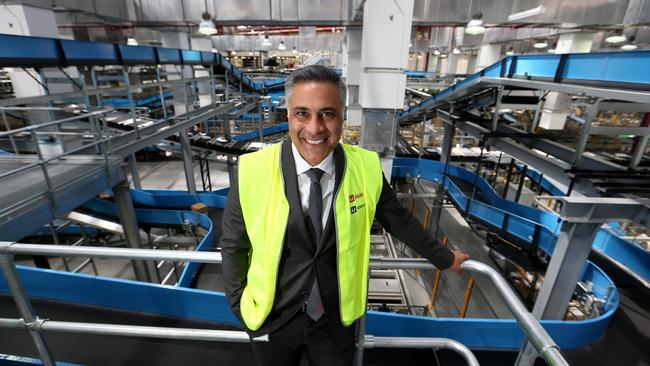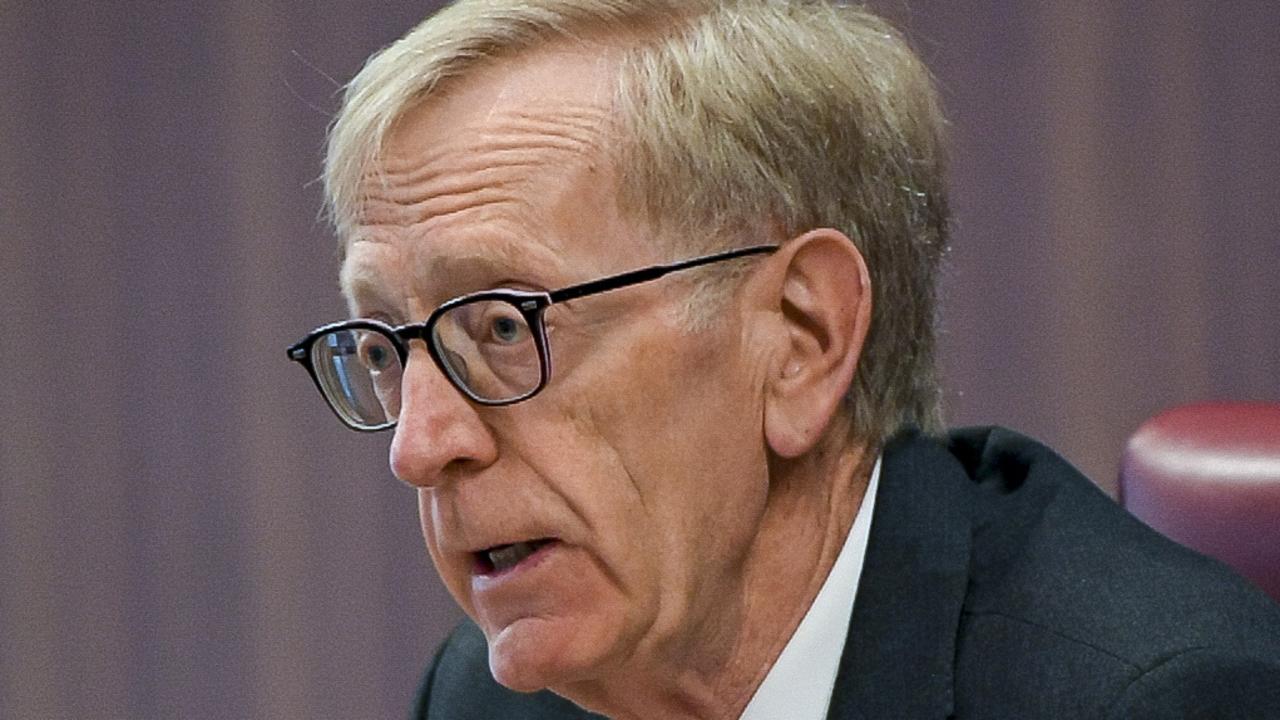Australia Post chief Ahmed Fahour offers the mail on growth strategy
AUSTRALIA Post chief Ahmed Fahour is determined the group’s new plan won’t get lost in the mail, writes Jeff Whalley

Business
Don't miss out on the headlines from Business. Followed categories will be added to My News.
THE country’s most isolated post box is on a dive platform at the remote Agincourt Reef on the Great Barrier.
The highest are almost 2000m above sea level at the Perisher and Thredbo ski resorts.
Having clocked up 207 years, Australia Post is etched into the national psyche as much as its footprint stretches across the country.
But this week will be a watershed one for Post.
It may have won the regulatory battles to get through what Post chief Ahmed Fahour says are crucial service changes if it is to survive — but the real test will come with the public acceptance of those changes.
As Post ups stamp prices by more than 40 per cent from Monday and changes to delivery times to help pay for the dwindling letter division revenue, Mr Fahour spoke to Business Daily.
The most important message he wants Australians to know about the storied postal service amid this change is that it has a bright future and that is firmly rooted in parcels and linking to Asia.
“We are the delivery engine of the internet, that is who we are,” he says.
“We handle two out of every three packages bought online in this country.
“Australian small businesses are taking advantage of this.
“They are not thinking, ‘I have an audience within Australia’. They are saying, ‘I have billions of customers around the world, I have 190 million middle-class Chinese.”
It is a big year for selling the positive attributes of the changing institution.
Despite taking home a wage of $2.1 million in the last year, not even Mr Fahour’s critics would suggest he has an easy job.
The problems facing Post are varied and some argue, possibly terminal.
In September, Mr Fahour revealed that the postal service had fallen into the red for the first time in more than 30 years.
Australia Post announced its ailing letters division lost $381 million in the year to June, dragging the wider postal service to a $222 million full-year loss. A year earlier, the institution had chalked up a $116.2 million profit.
Why is this happening now?
Basically, Australians are eschewing sending letters — the old-style “snail mail” — for email and online.
While many elderly Australians prefer traditional letters, the mass exodus means Mr Fahour has to manage its decline while also adhering to government rules to deliver to everyone in the nation, and while keeping the organisation solvent.

Luckily for Mr Fahour he has one goldmine at his fingertips if he can restructure the organisation to grab it.
Last year’s financial results point to it.
Just as letters dropped, parcel revenue rose 3.6 per cent to $3.21 billion — on the back of people sending and receiving parcels from online services.
For the first time, parcels made up more than half of group revenue, which was stable at $6.37 billion.
As Mr Fahour puts it, Post is now “a parcel company more than we are a letter company”.
Which is why in the past year he fought a battle to have the regulatory restrictions around Post loosened up, which led to the changes this week.
For years stamp prices have been kept at 70c and the service was not allowed to offer a “priority” service.
Under the changes stamp prices will rise to $1, although the concession price for 5.7 million Australians will stay at 60c and greeting cards at 65c.
There is also now a two-speed letter service, with regular post two days slower than a more costly one-to-four business day priority service.
This, in Mr Fahour’s opinion, helps Post stem the bleeding and focus on winning more parcel business.
That will be the other battle you see this year. But it won’t be easy.
Mr Fahour is pleased his team passed the hurdle of bedding down Post as the parcel delivery service of choice for the Christmas period.
Over a month leading into Christmas, the service broke its own record for processing parcels five times.
During the Christmas period its new parcel centres were handling between 30,000 to 35,000 parcels an hour.
This is due to added capacity brought in by mechanisation which can keep coping with new volumes for another decade.
But other big international postal services are also eyeing the Aussie market.
Japan Post — which in 2015 bought Australian logistics group Toll — and Singapore Post are the main predators hunting the revenue streams.
While Mr Fahour says Post has already made headway through delivering via eBay, within Australia the real dollars to be made are through cross-border trade supporting Australian business as a courier service.
It’s not just Australians getting books and clothes over the internet but the likes of Yarra Valley winemakers exporting to China.
Expect to see more innovation from Post this year. Mr Fahour, for instance, has already touted using drones to deliver to remote Australia.
But he is realistic about the larger forces helping the postal service as well.
He says parcel volumes into China have grown as the Australian dollar has fallen.
In 2015 for the first time the volume of parcels into China eclipsed the volume coming into Australia, with items such as baby formula and vitamins in high demand.
Post has also been smart in hitching deals with the likes of Chinese online ordering giants Alibaba and its 1688.com business-to-business online marketplace, plus rivals such as JD.COM.
Mr Fahour is also sceptical about the impact of the likes of Japan Post who he thinks will target larger logistic business and smaller operators who won’t deliver to all parts of Australia.
“(These will) look for large density and large metropolitan areas — who will service all of Australia?” he asks.
He is also firm in his belief that most Australians won’t feel the pain of the price hikes.
With 97 per cent of mail sent by corporates, and pensioners and the like prevented from having to pay the price rise he thinks Australians should be relieved it is happening.
“Why should Australians be subsidising letters services for business?”
What are next week’s changes?
• THE stamp price rise — from 70c to $1 — will come into effect on Monday. However, the concession price will stay at 60c for 5.7 million Australians and at 65c for greeting cards.
• FOR consumers the two-speed letter service, with regular post two days slower than a more costly one-to-four business day priority service, will kick off.
• THE changes were approved by the Federal Government in March.


